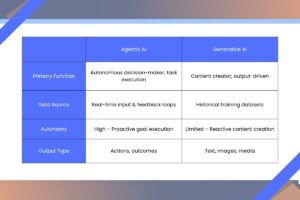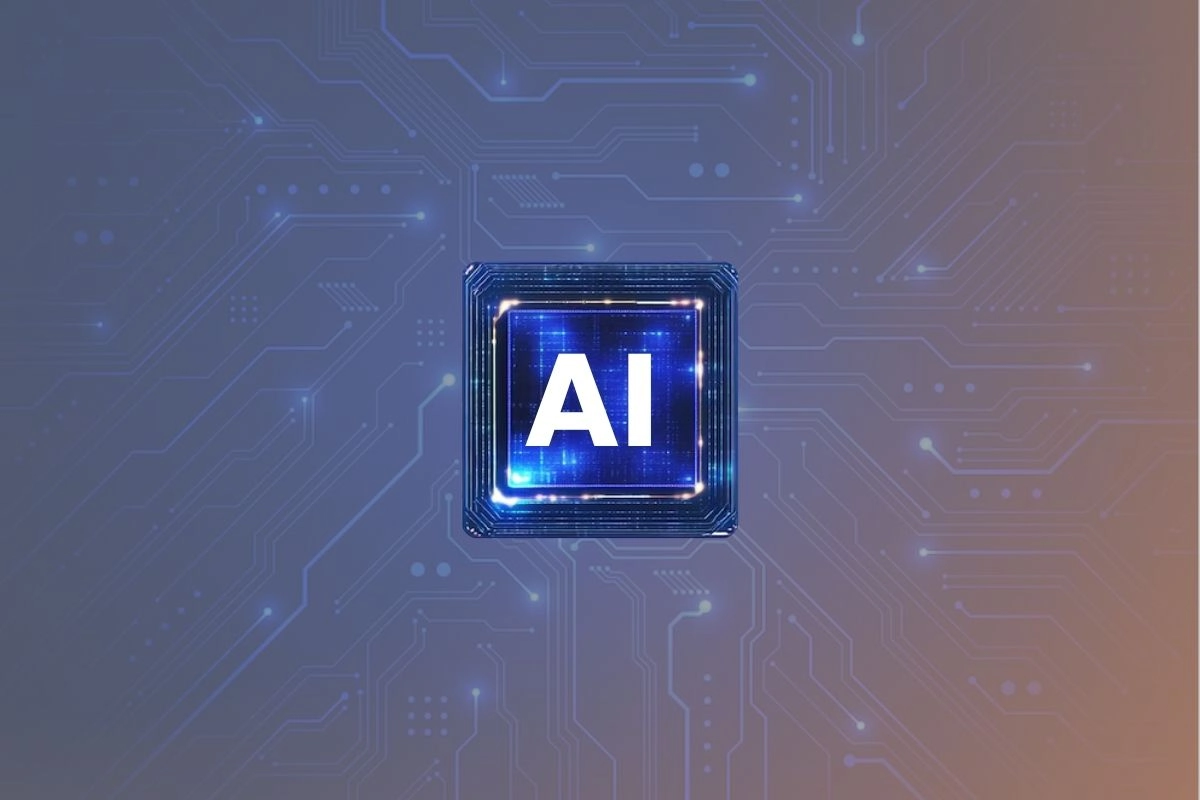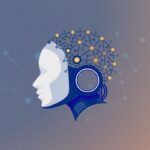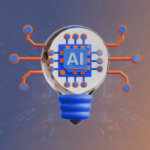We’re at a pivotal moment in AI evolution, where understanding the roles of Agentic AI vs. Generative AI could redefine how we build and deploy intelligent systems.
These two AI types are shaping the future of automation, creativity, and decision-making, yet their core functions are fundamentally different.
In this guide, we dig deeper into what sets them apart, how they work, and how they complement each other in real-world applications.
What is Agentic AI vs. Generative AI?
When comparing Agentic AI vs. Generative AI, it helps to understand their foundational principles. Agentic AI focuses on decision-making and autonomy. It acts based on goals, analyzes environments, and adapts in real-time. Generative AI, or GenAI/gen ai, on the other hand, is about creation — generating text, images, code, and more from massive data inputs.
Agentic AI: The Autonomous Executor
Agentic AI is a category of automated AI agents designed to perform complex tasks with minimal human input. Unlike conventional AI systems that operate strictly based on predefined instructions and structured data, Agentic AI takes a different approach. It demonstrates autonomy, makes context-driven decisions, and adapts its behavior without continuous human input.
Understanding the Term “Agentic”
So, what does agentic mean? Simply put, it describes the capacity to take independent action and make informed decisions. In the world of AI, this translates into systems that don’t just process information – they act, learn from outcomes, and improve over time.
- Gathering real-time data from multiple sources
- Making context-aware decisions
- Taking actions based on those decisions
- Learning from outcomes to improve future behavior
Agentic AI Use Cases:
- AI personal assistants managing emails, calendars, and reminders
- AI agents for healthcare, real estate, etc.
- Customer support automation from ticket intake to resolution
- Smart supply chain optimization
- Coding assistance through debugging and deployment automation
- And more
Want to dive deeper into Agentic AI?
Discover its core features, real-world use cases, and how it drives outcomes through autonomy.
Read our in-depth blog on Agentic AI here.
What Is Generative AI? What Is A Key Feature Of Generative AI?
Generative AI, also known as GenAI, is designed to create original content by analyzing and learning from vast datasets. Through the use of advanced neural networks and large language models, it emulates human-like creativity — producing everything from text and images to code and multimedia in response to prompts.
Key Feature:
- Blog posts, product descriptions, ad copy
- Images, music, and video
- Code snippets and technical documentation
How It Works:
- Trains on vast datasets
- Recognizes linguistic and visual patterns
- Produces new outputs based on prompts
- Learns user preferences for customization
Generative AI is rapidly reshaping industries like marketing, education, and product development by streamlining processes and boosting productivity through intelligent automation.
Understand the core of Generative AI and its key features. Dive into how this revolutionary technology works and its impact on modern industries.
Read the full blog post on Generative AI now.

Combining Agentic AI and Generative AI
The most powerful solutions arise when Agentic AI and Generative AI are integrated. For example:
- Use Generative AI to draft an email response
- Leverage Agentic AI to determine the optimal timing and target audience for delivery.
This synergy creates intelligent systems that not only generate content but also act upon it autonomously.
Real-World Applications:
Agentic AI Use Cases:
- Autonomous HR systems
- Fraud detection tools
- Proactive business analytics platforms
- AI-powered supply chain management
- Personal AI assistants
- Agentic AI in financial advisory
- Automated cybersecurity systems
- Smart manufacturing operations
- Legal and compliance automation
- Customer service automation
- And more
Generative AI Use Cases:
- Content marketing automation
- AI art generators
- Customer chatbots
- Auto-generated software documentation
- Script writing for videos
- Code generation and completion
- Personalized content recommendations
- Voice synthesis for media
- Virtual assistants
- AI-powered translation tools
- GenAI-driven research assistants
- And more
Agentic AI vs. Generative AI: Navigating the Challenges
Both Agentic AI and Generative AI offer immense potential but come with critical considerations:
Ethical Considerations
As the use of AI expands across industries, ethical challenges are becoming increasingly critical. Each AI paradigm brings its own set of concerns that must be addressed proactively.
Agentic AI poses complex questions around accountability, control, transparency, and safety. Because these AI agents operate with a high degree of autonomy – making decisions and taking actions in real time, understanding who is responsible for outcomes becomes blurred. This is particularly sensitive in high-impact sectors like healthcare, finance, and legal operations, where AI-driven decisions can have far-reaching consequences.
Generative AI, on the other hand, introduces ethical dilemmas around bias in training data, misinformation, copyright infringement, and data privacy. Since it generates content based on patterns learned from massive datasets, there’s a risk of reproducing societal biases or generating misleading or plagiarized material. Deepfakes and synthetic media are especially concerning in political, journalistic, and educational contexts.
To mitigate these risks, a multi-layered approach is essential. Robust governance frameworks must be established to define clear accountability for AI-driven decisions. Transparency and explainability should be prioritized, helping users and stakeholders understand how both agentic and generative models operate.
Human oversight remains vital particularly in high-impact use cases to ensure that AI systems augment rather than replace human judgment. Regular audits of training data can help identify and minimize algorithmic bias, improving fairness and accuracy in outputs.
Furthermore, building AI systems with ethical and secure design principles from the outset, including strong privacy safeguards and compliance controls, is critical. Lastly, fostering AI literacy across organizations and among users can empower people to use these technologies responsibly, detect misinformation, and maintain critical thinking in AI-assisted environments.
Data Privacy and Security
Agentic AI systems, due to their autonomous decision-making capabilities and continuous interaction with real-time environments, pose unique risks related to data over-collection, unauthorized data access, and inadvertent surveillance.
As these automated AI agents perform tasks with minimal human oversight, they may aggregate more user data than necessary, increasing the exposure to potential privacy violations and security breaches. The real-time nature of their inputs also introduces vulnerabilities in access control and monitoring, especially in sensitive sectors like finance, healthcare, and enterprise automation.
GenAI faces different but equally pressing data challenges. Because it is trained on massive datasets, often scraped from the open internet or user inputs, GenAI systems are susceptible to data leakage, inadvertently revealing sensitive or proprietary information within generated content. Whether producing code, medical summaries, or customer communication drafts, the risk that a model might regurgitate confidential training data without context can have serious implications for intellectual property, compliance, and user trust.
To safeguard data integrity across both AI modalities, organizations must adopt a layered privacy strategy. Strong encryption protocols and granular access controls are essential for managing how Agentic AI interacts with user data in real time.
For Generative AI, privacy-preserving machine learning techniques such as differential privacy and federated learning can help minimize the chance of sensitive data being memorized and surfaced in outputs. Regular audits, rigorous data anonymization, and secure model training pipelines are critical to reducing systemic vulnerabilities.
Moreover, establishing transparent AI governance frameworks that include consent management, data lineage tracking, and continuous compliance checks can further ensure responsible use of both agentic and generative systems.
Job Displacement
Agentic AI, with its ability to autonomously execute multi-step workflows and make context-aware decisions, presents a significant disruption to specialized and middle-management roles.
These automated AI agents not only streamline operations but also replace the need for certain human-led coordination, analysis, and execution tasks across domains like supply chain, HR, and finance. The automation of decision-making and task orchestration, once considered human-exclusive, is now being handled by AI systems capable of learning from outcomes and adapting to changing goals.
On the other hand, Generative AI is redefining the landscape of creative and white-collar work. Its proficiency in generating high-quality text, images, audio, and code at scale is reshaping content creation, marketing, software development, and even journalism. From writing product descriptions to generating design mockups, GenAI tools can now perform tasks traditionally managed by writers, designers, and content strategists posing a new kind of disruption in industries that rely on creativity and originality.
Despite these challenges, the path forward isn’t one of replacement, but of AI workforce transformation. The most effective mitigation lies in large-scale reskilling and upskilling initiatives aimed at preparing the workforce for AI-augmented roles. Encouraging human-AI collaboration — where humans oversee, direct, and enhance AI output can unlock new hybrid roles in areas like AI operations management, prompt engineering, and ethical oversight.
Organizations that invest in continuous learning, digital fluency, and AI literacy will be best positioned to turn potential displacement into opportunity, building a more adaptive, AI-ready workforce for the future.
Complexity and Explainability
Agentic AI, which operates with a high degree of autonomy and engages in multi-step reasoning to achieve defined goals, often functions as a black-box system. Its ability to independently assess environments, make decisions, and execute tasks introduces layers of cognitive processing that can be difficult for humans to trace or interpret. This lack of transparency in automated decision-making systems can raise serious concerns, especially in high-stakes domains like healthcare, finance, or compliance, where understanding why a particular action was taken is critical.
Conversely, Generative AI presents its own explainability issues. Large language models and multimodal neural networks used in GenAI are trained on massive datasets, which makes it difficult to pinpoint the rationale behind a specific output be it a legal summary, a medical recommendation, or a product image. The model’s probabilistic generation of content, influenced by billions of parameters, often defies traditional logic paths. This unpredictability can lead to mistrust, especially when these tools are applied in areas where factual accuracy and traceability are paramount.
To address these challenges, the industry must place greater emphasis on Explainable AI (XAI) — a suite of methodologies and design practices aimed at making AI decisions more transparent and interpretable. By integrating interpretable model architectures, audit trails, and human-in-the-loop mechanisms, both Agentic AI and Generative AI systems can become more accountable and trustworthy.
As intelligent systems become increasingly embedded in enterprise and consumer applications, explainability will be not just a compliance checkbox, but a foundational requirement for ethical, safe, and reliable AI deployment.
Over-Reliance
With Agentic AI, the danger lies in its autonomous execution of complex, multi-step tasks. These AI agents are built to make decisions with minimal human input, but when users blindly trust their outputs without review, it can lead to critical oversight loss, especially in dynamic environments like logistics, finance, or healthcare where unexpected edge cases demand nuanced human judgment.
Meanwhile, Generative AI presents a different kind of over-reliance challenge. As users become accustomed to AI-generated text, designs, or recommendations, there is a risk of diminished human critical thinking, reduced scrutiny of facts, and weakened ability to detect AI-generated misinformation. When teams default to accepting GenAI outputs at face value — be it in marketing, education, or legal content creation — they may unintentionally propagate errors, bias, or even harmful content.
Mitigating these risks requires a deliberate strategy that prioritizes human-in-the-loop AI systems where human validation is integrated into the decision pipeline to ensure accountability and context-aware intervention.
Additionally, widespread AI literacy training is essential. Educating users about AI capabilities, limitations, and best practices fosters a more informed, skeptical, and responsible engagement with intelligent systems. In navigating the balance of Agentic AI vs. Generative AI, the goal is not to replace human intelligence, but to augment it while preserving critical oversight and ethical integrity.
Future Outlook: What Lies Ahead for Agentic AI vs. Generative AI
As we look toward the future of Agentic AI vs. Generative AI, the horizon is rich with innovation, promising a new era of human-machine symbiosis, enhanced cognition, and purposeful automation. The convergence of autonomy and creativity in AI is giving rise to technologies that not only perform tasks but do so with adaptability, context, and ethics in mind.
More Sophisticated AI Agents
Agentic AI is evolving rapidly, moving beyond simple task automation toward multi-agentic systems capable of executing complex, cross-domain workflows. Future AI agents will exhibit higher degrees of emotional intelligence, context-awareness, and self-optimization. From autonomous healthcare advisors to intelligent legal assistants, these agents will increasingly function as digital co-workers, demonstrating reasoning and foresight that mirrors human decision-making.
Advanced Generative Models
Meanwhile, Generative AI is set to advance with more contextually aware, long-form content generation and even real-time multimodal synthesis — combining text, speech, imagery, and video seamlessly. These models will more accurately simulate nuanced human behaviors, tone, and empathy, making them valuable in industries like entertainment, education, journalism, and therapy. Innovations in Responsible AI will ensure that these generative systems operate within ethical and legal boundaries, minimizing the risk of bias or misinformation.
Seamless Human-AI Collaboration
The future lies not in replacement, but in collaboration between humans and Agentic AI. In crisis response, product innovation, or strategic planning, we will see collaborative intelligence at work. With AI taking on operational burdens, humans can focus more on creativity, leadership, and ethics. This synergy will unlock efficiencies and enable new value chains, where humans remain firmly in the loop to guide and audit machine decisions.
AI for Social Impact
Both Agentic AI and GenAI hold promise in addressing global challenges. From climate modeling and energy optimization to precision medicine, education reform, and accessible healthcare, AI systems will increasingly be built with purpose-driven objectives. Particularly, Explainable AI (XAI) will be vital to ensure that socially impactful systems maintain transparency, accountability, and public trust.
Rise of Artificial General Intelligence (AGI) and Quantum AI
As we move closer to Artificial General Intelligence (AGI) and potentially even Superintelligence, the line between human and machine cognition will blur. These emerging forms of intelligence are expected to reason abstractly, learn in real time, and solve problems across domains—much like a human brain. Simultaneously, Quantum AI is being explored to radically accelerate data processing and decision-making in high-dimensional environments, especially where traditional computing falls short.
Personalized and Multimodal AI Systems
AI experiences are becoming smarter and more personal — adapting to intent, behavior, and context. Multimodal AI, which processes multiple data types simultaneously (like video, audio, and text), will redefine user interaction. Whether it’s in healthcare diagnostics, customer support, or virtual assistants, AI will be embedded deeper into our daily tools, blending Agentic intelligence with Generative creativity for seamless, anticipatory experiences.
FAQs
1) What is Agentic AI Agent?
Agentic AI agents are autonomous systems capable of making decisions, taking actions, and learning from outcomes without constant human input.
Example: A financial AI advisor that autonomously adjusts your investment portfolio based on market trends.
2) Can AI agents be integrated with existing enterprise systems?
Yes, AI agents can be integrated with existing enterprise systems to automate workflows and enhance efficiency.
Example: An AI agent in HR software that autonomously shortlists candidates and schedules interviews.
3) Are there real-world agentic AI use cases?
Yes, including AI use cases in healthcare, cybersecurity tools, real estate, BFSI, supply chain automation and more.
Example: AI agents in healthcare can help manage patient records and even assist in diagnosis.
4) What is GenAI used for?
GenAI is widely used in marketing, content generation, software development, and education.
Example: Chatbots generating real-time product descriptions, or GenAI tools writing movie scripts.
5) Can Agentic and Generative AI work together?
Absolutely. Agentic AI can use Generative AI’s outputs to make more informed decisions and execute tasks.
Example: An AI agent planning a product launch might use GenAI to draft campaign emails, then schedule and send them autonomously.
Final Thoughts
The comparison of Agentic AI vs. Generative AI isn’t about choosing one over the other—it’s about recognizing their unique capabilities and how they can work together. As advanced AI systems evolve, we’re seeing a powerful convergence of autonomous decision-making and creative generation. This synergy marks a shift toward more adaptive, intelligent solutions. Understanding both forms of AI is key to making the most of current technologies—and staying ready for what’s ahead.
Ready to explore how AI can transform your business?
Connect with our experts to discover smart, scalable AI/ML solutions.






 Agentic AI vs Generative AI: What’s the Difference and Why It Matters
Agentic AI vs Generative AI: What’s the Difference and Why It Matters  The Hidden Costs of Incorrect EDGAR Filing and XBRL Tagging – And How to Avoid Them
The Hidden Costs of Incorrect EDGAR Filing and XBRL Tagging – And How to Avoid Them  What is Agentic AI and How It’s Transforming Business Operations
What is Agentic AI and How It’s Transforming Business Operations  AI Tools For Small Businesses
AI Tools For Small Businesses  AI Examples in Everyday Life
AI Examples in Everyday Life 